
Craft as a Language
Craft as a Language
The realm of crafts has long served as a universal language, spanning cultures and generations, crafted out of necessity and utilizing natural resources to create objects for various purposes. Yet, within the tapestry of craftsmanship lies a deeper narrative, from which the phrase “inspired by” emerges as a guiding principle. Woven patterns reflect the intricate beauty of natural surroundings, while shapes echo the graceful simplicity found in everyday life. Even the nomenclature of each craft style mirrors the rhythms of daily life, becoming a lexicon in itself.
This linguistic aspect of craftsmanship extends beyond mere utility, becoming a means of transmitting knowledge across generations. Through this language of craft, traditions are passed down, techniques are refined, and styles evolve—a cultural phenomenon that embodies the very essence of human creativity.
The Community Project section, produced by the House of Artisans, honors the artisans and their craftsmanship. This experience includes images capturing hand movements during crafting and stories shared by the artisans through written scripts, highlighting the theme: Craft as a Language.
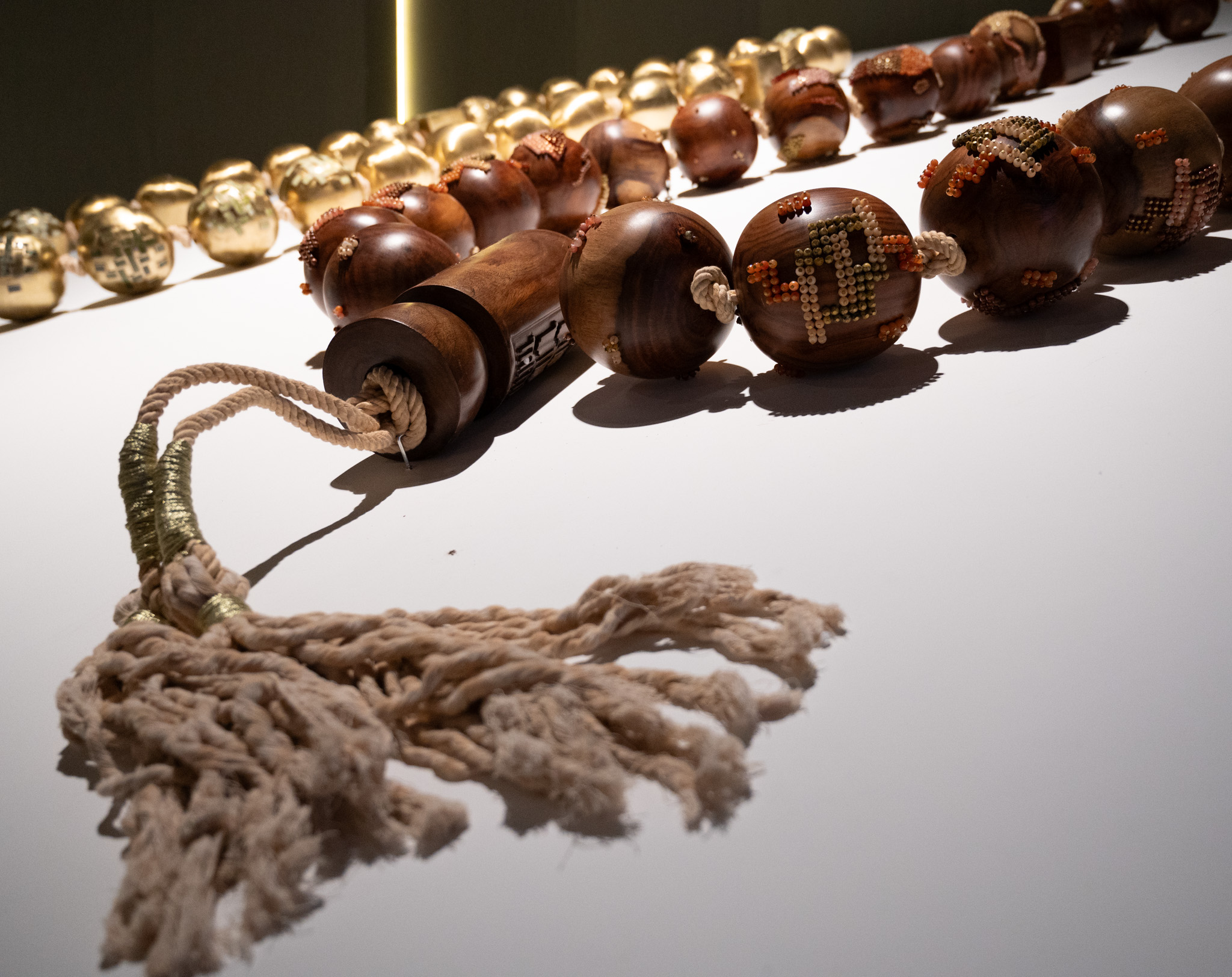
81 Designs
Meherunnisa Asad
Interconnected, 2024
Stone Inlay, Repousse, Beading and Carving.
Mixed medium, Handcrafted.
427.99 cm
Beacon of Light Collection
Courtesy of 81 Design and Studio Lél, Abu Dhabi
The Beacon of Light Collection is inspired by the Misbah’s symbolism in Islamic culture emphasizing sustainability and the preservation of heritage crafts. It fosters cultural exchange through collaboration with diverse artisans, promoting traditional craftsmanship in a contemporary context. This collection serves as a bridge between Middle Eastern and South Asian crafts, blending techniques and traditional patterns from the UAE, Palestine, Pakistan, and Afghanistan. By honoring the artistry of craftsmen, the collection champions sustainable practices and celebrates the rich heritage of both regions.
The collection draws inspiration from traditional Emirati patterns such as Khoos and Traditional Palestinian Tatreez Patterns. It incorporates the art of stone inlay, known as ‘parchin kari’ in the South Asia subconitinent (Afghanistan, Pakistan and India) —a technique mastered by Afghan and Pakistani artisans situated in Pakistan. Rooted in ancient Roman opus sectile and revived during the Italian Renaissance in the 16th century, this technique showcases a blend of heritage and craftsmanship, adding depth to the collection's narrative.
For more information, visit 81 Designs website at: 81designsme.com
Abu Dhabi Music and Arts Foundation
Ayesha Hadhir
Woven by Hands, Walked by Generations, 2024
Sadu, Loom, brass, wood, carpet, repurposed fabric
Courtesy of the artist and Abu Dhabi Music & Arts Foundation (ADMAF), Abu Dhabi
The artwork captures the delicate balance between tradition and innovation, reflecting the UAE's rich cultural heritage.
The table, with legs sculpted to resemble the human forms, embodies our responsibility to uphold the weight of ancestral craftsmanship. Resting upon these legs is a Mandoos, a traditional chest symbolizing the preservation and transmission of crafts across generations. Beneath, AI-generated fishnet patterns interwoven into a carpet evoke the sea’s sustenance and the intricate craftsmanship of the past. The Sadu loom spins the threads of cultural identity forward, binding the legacy of the past to the future, it speaks to the next generation, urging them to remember and carry forward the stories, skills, and spirit of those who came before.
Each component of the installation narrates the journey of our heritage— how we stand on the shoulders of those who crafted before us, and how, like the loom, we continue to weave tradition into tomorrow.
A daily performance was held during the fair in partnership with House of Artisans and students from NYUAD arts and humanities division’s theatre program, which activated the installation, further deepening the experience of this cultural exploration.
For more information, visit ADMAF website at: www.admaf.org

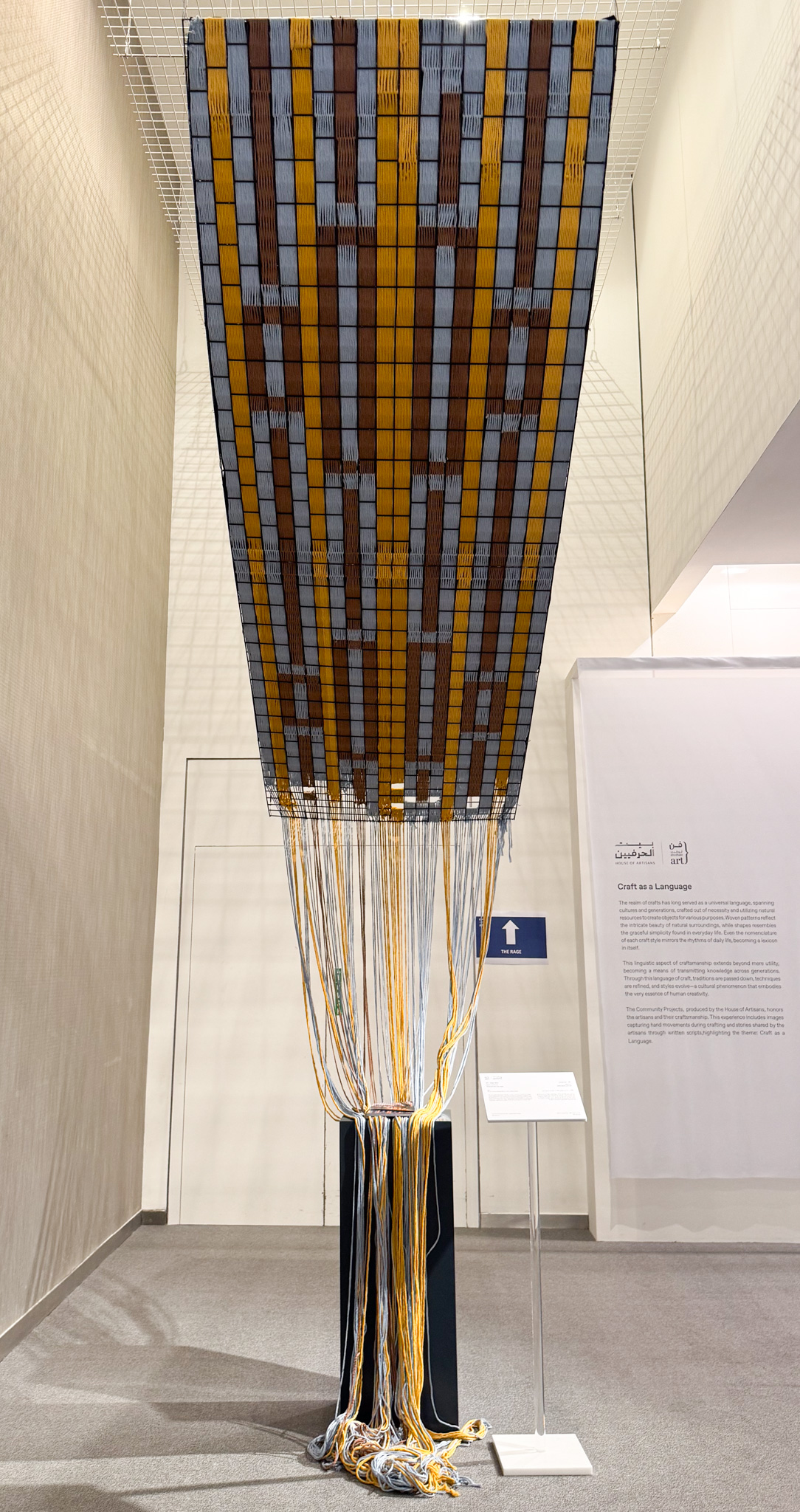
1971 design space
Sara AlKhayyal
Where the Grid Lies, 2024
Sadu
310 x 110 cm (Frame), 200 x 110 cm (Sadu weave)
Courtesy of the artist and 1971 - Design Space, Sharjah
In line with this year’s Community Partners theme at Abu Dhabi Art, Craft as a Language 1971- Design Space continues to explore the craft of Sadu with Emirati designer Sara Alkhayyal by presenting a new iteration of the previously commissioned work, Where the Grid Lies.
The work marks Alkhayyal’s emphasis on grids, honoring the enduring tradition of Sadu weaving technique.In this technique similar to architects, these craftsmen use a grid as a quiet blueprint for their woven stories. However, the grid usually remains hidden, behind the scenes of their work.
The grid steps into the spotlight, no longer in the shadows but crafted from metal, highlighting its role in holding the art together. The design, inspired by the classic “alshanof” motif, takes on a modern twist. This artwork emphasizes the importance of thegrid, like an X-ray revealing the foundation of a sadu fabric, where the grid, not the pattern, takes the lead. It’s a reminder that even in art, structure can be as captivating as the art itself—a glimpse into the unseen foundation that supports creativity.
For more information, visit 1971 design space website at: 1971design.ae
Kalimat Foundation
Mohamed Al Mansooriand House of Artisnas
Mixed media
50 cm x 153 cm x 35 cm
Courtesy of the artist, House of Artisans and Kalimat Foundation, Sharjah
With more than 160 libraries and 17,000 Arabic books, the "Pledge a Library” initiative empowers under-resourced Arab children worldwide by securing their right to read and access books, inspiring them to dream, imagine, and strive for a brighter future.
Harnessing the beauty of art with culture and knowledge, for Abu Dhabi Art the initiative has forged a collaboration with the Emirati contemporary artist Mohamed Al Mansoori and the House of Artisans to share the beauty of Emirati art and handicrafts with the world, and inspire young generations to safeguard their heritage and identity.
For more information, visit Kalimat Foundation website at: Kalimatfoundation.ae
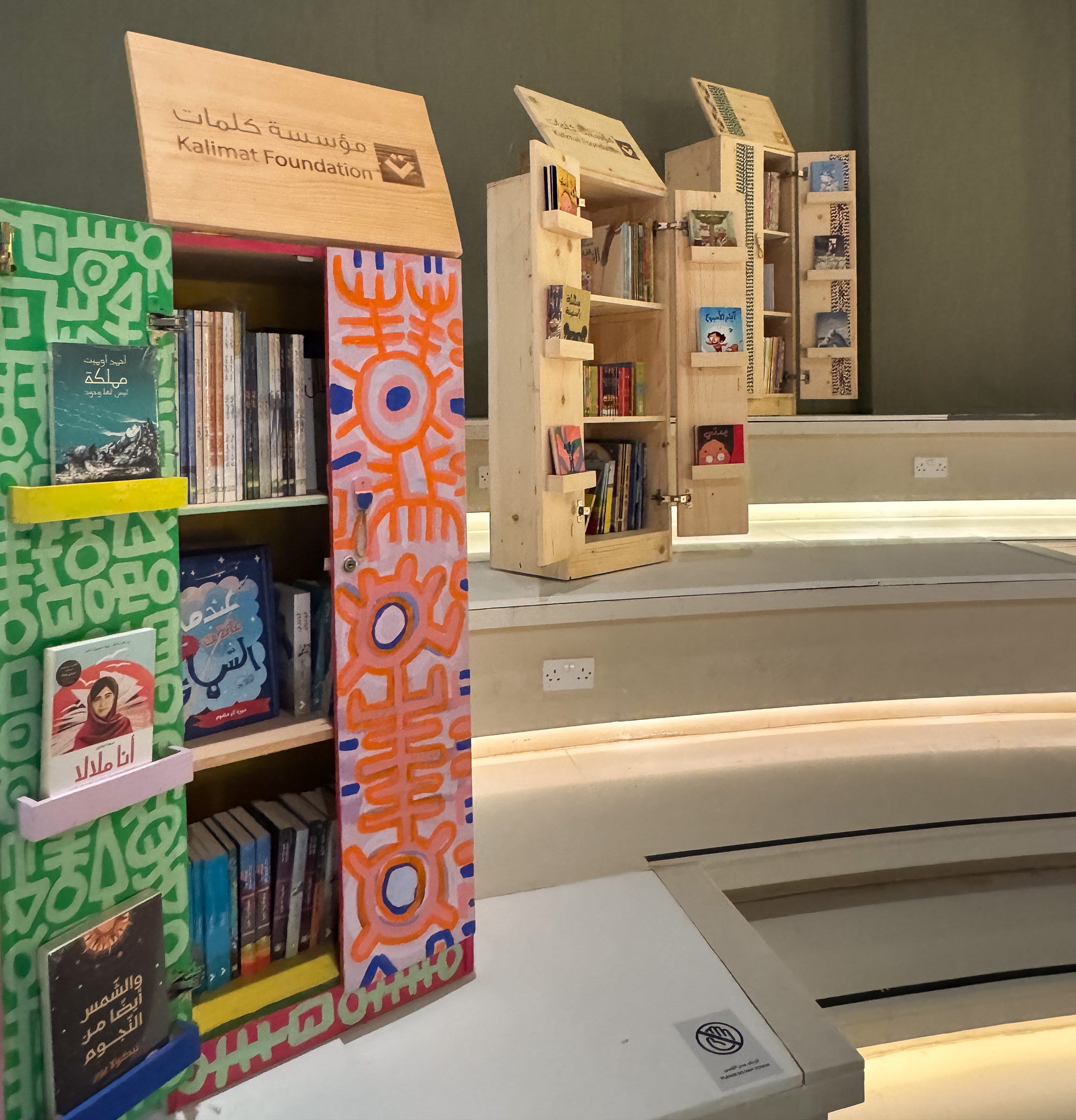
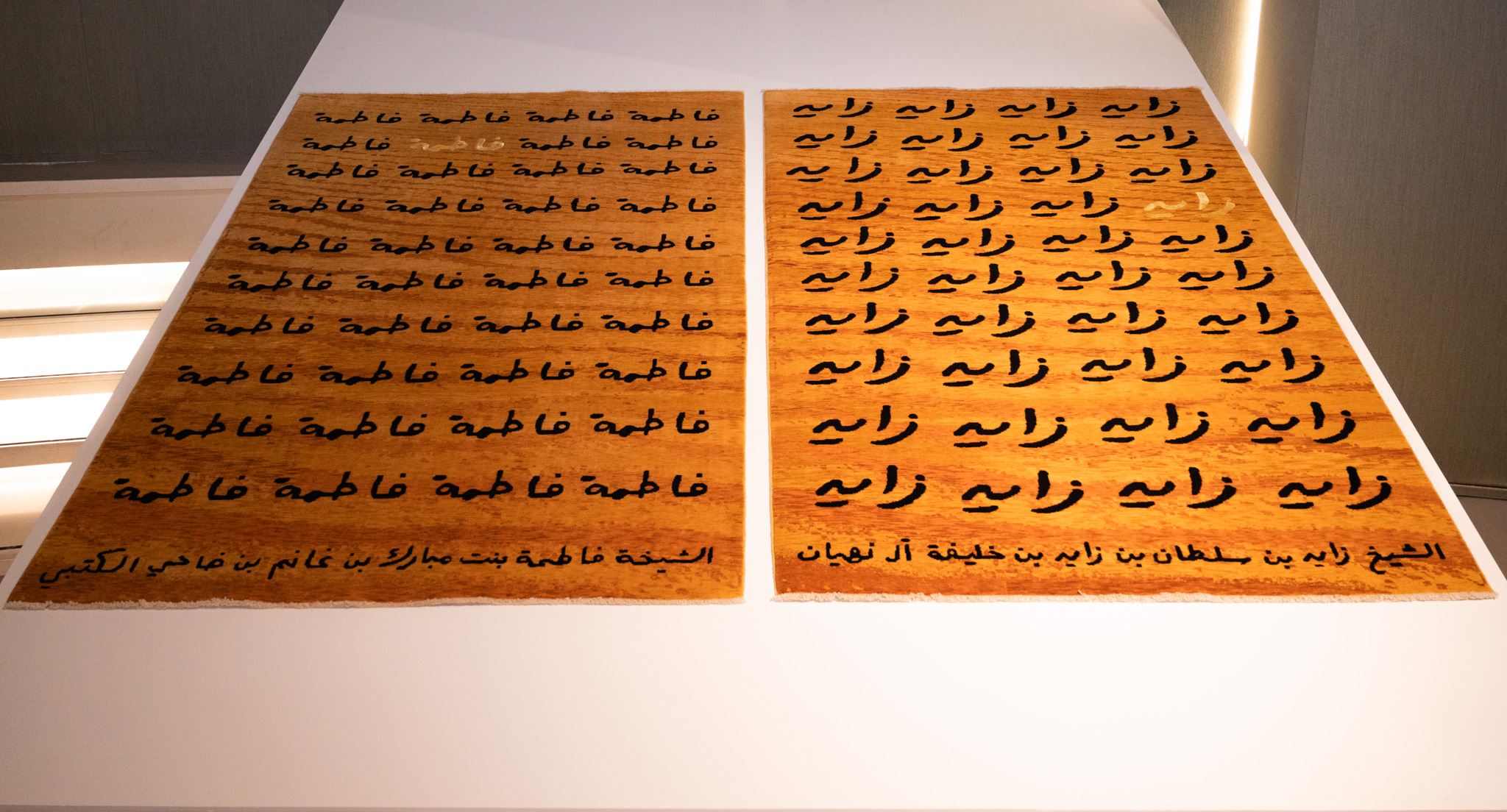
Fatima Bint Mohamed Initiative
Khalifa Ahmed
Zayed and Fatima, 2024
Handmade carpet on a metal rod
230 cm x 150 cm
Courtesy of the artist and FBMI, Abu Dhabi
This artwork serves as a tribute to our founding father, Sheikh Zayed bin Sultan Al Nahyan, and our mother, Sheikha Fatima bint Mubarak, embodying our deep admiration for them. The piece features significant details, such as the repetition of their names, Zayed and Fatima, honoring their enduring legacy of positive impact.
The 13th appearance of Zayed's name, inscribed in gold, reflects the 13 principles he championed: courage, firmness, justice, mercy, asceticism, generosity, faith, pride in heritage, hard work, perseverance, loyalty, family values, and love for our country.
Similarly, the 7th occurrence of Fatima’s name, also in gold, highlights her vital role as the mother of the seven Emirates.
Their names are elegantly inscribed on a sand-colored surface, symbolizing the natural landscape of our region.
For more information, visit FBMI website at: FBMI.ae
NYU Abu Dhabi MFA Art and Media
Mowen Li
A Little Bird Told Me, 2024
Variable dimensions
Mixed media
Courtesy of the artist and NYUAD, Abu Dhabi
The diaristic paintings of the artist Mowen Li have informed her creation of this tent as a welcoming structure. The outside fabric depicts what she had heard about the UAE and the Middle East prior to arriving in the emirate. The artwork on the inside of the fabric reflect on her experiences since being here. Mowen Li invites you to come into the tent to have a conversation about life in this region, and to share your stories in visual form.
For more information on NYUAD, visit their website: nyuad.nyu.edu
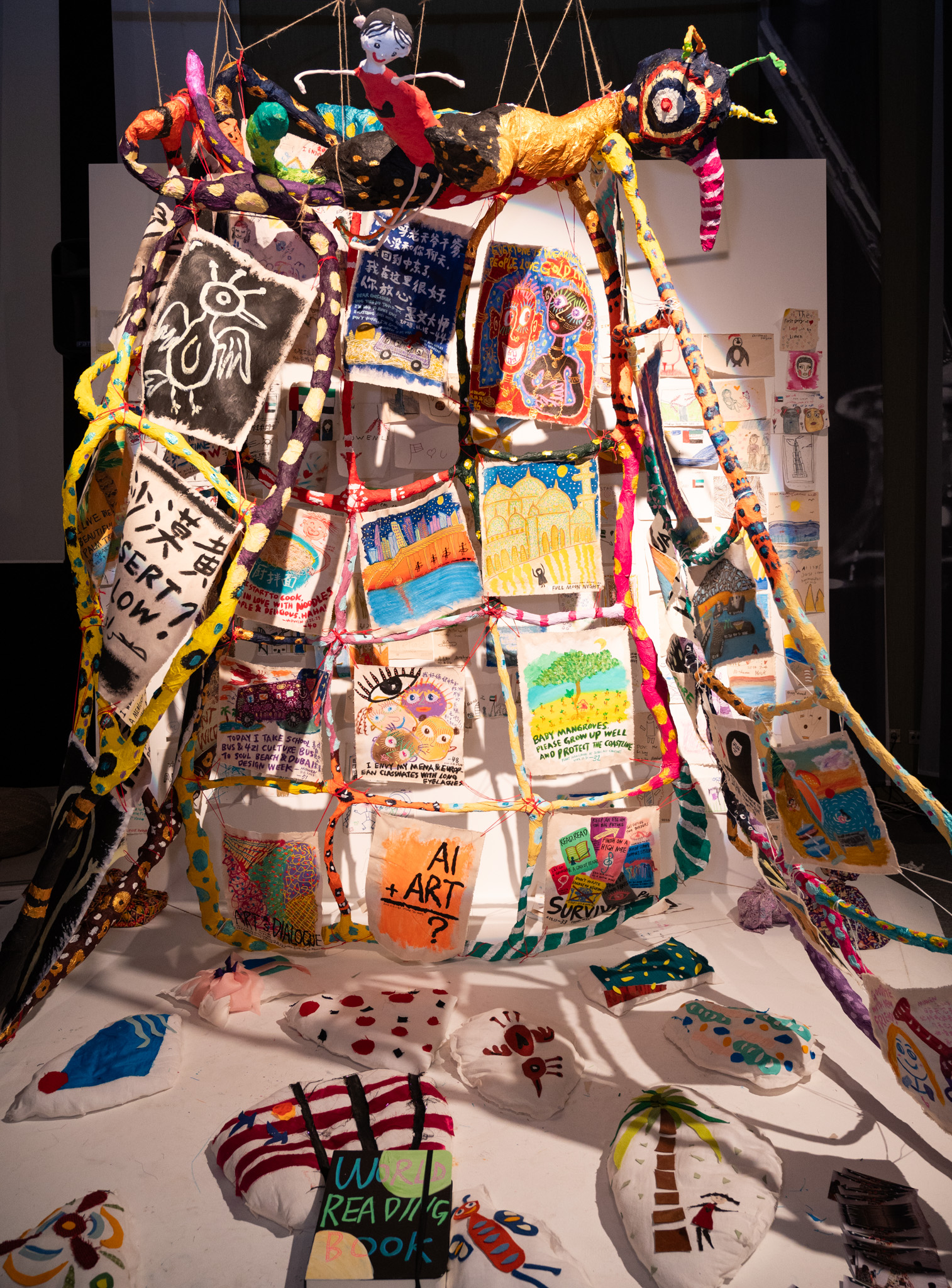
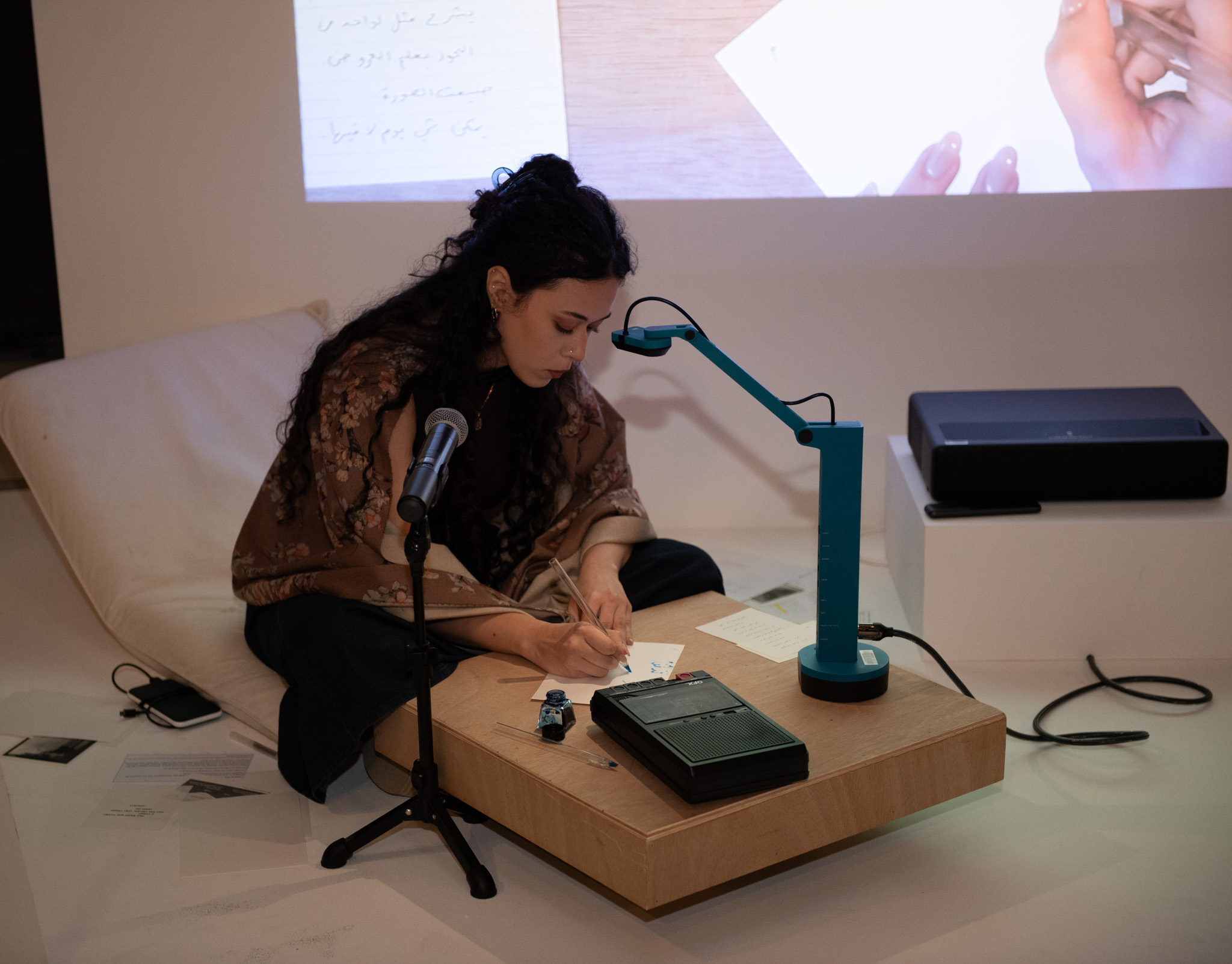
NYU Abu Dhabi MFA Art and Media
Dima Abou Zannad
Non-movement Movement, 2024
Variable dimensions
Lecture performance; video, sound, table, chair, paper
Courtesy of the artist and NYUAD, Abu Dhabi
Dima’s practice is primarily preoccupied with the trace, especially as it presents itself within language. Her process involves performing a deconstruction of language. She extracts, document, and place language in its aesthetic literary form within view, reconfiguring it in the process. Non-movement movement is a project that arose out of a need to contextualize staticness in language, guided by an interpretation of Arabic grammar. The project aims to touch upon the many landscapes a stream moves through. It involves the performance lecture of a linguistic study on relative motion through the word تدفق (tadaffuq) (stream).
The performance alternates between processes of sense-making and meaning-making, guided by the movements of the throat in pronunciation and the morphology of the word, intertwined with a narrative that situates the linguistic study as a metaphor for a current state of paralysis.
For more information, visit NYUAD website at: nyuad.nyu.edu
College of Arts and Creative Enterprises - Zayed University
Aysha Aldhaheri
Crafts, 2024
Acrylic engraving 4mm and Weaving piece
1.5m X 1m each
Courtesy of the artist and College of Arts and Creative Enterprises - Zayed University, Abu Dhabi
Rooted in the rich tradition of Emirati crafts, Aysha’s work reflects the legacy of Talli, Khoos, and Sadu, art forms historically practiced by women and passed down through generations. These crafts were not only a means of creative expression but also vital in shaping the social and cultural bonds that defined Emirati womanhood. With the Houseof Artisans as a key contributor to her research, providing insights into these traditionalpractices, Aysha’s work captures the rhythmic sounds of talli, khoos, and sadu interwoven with women’s conversations, sounds that once echoed through homes and symbolized gatherings where storytelling strengthened unity and preserved cultural continuity.
The interplay between sound and craft embodies the continuity of these customs, representing the strength, unity, and resilience of women. By merging auditory elements with visual forms, this work highlights the enduring connection between craft, identity, and the collective memory of women’s contributions to Emirati society. These practices serve as a reminder of the intimate gatherings where craft was both a social activity and a cultural anchor, preserving the essence of Emirati heritage through the power of creation.
For more information, visit ZU website at: ZU.ac.ae

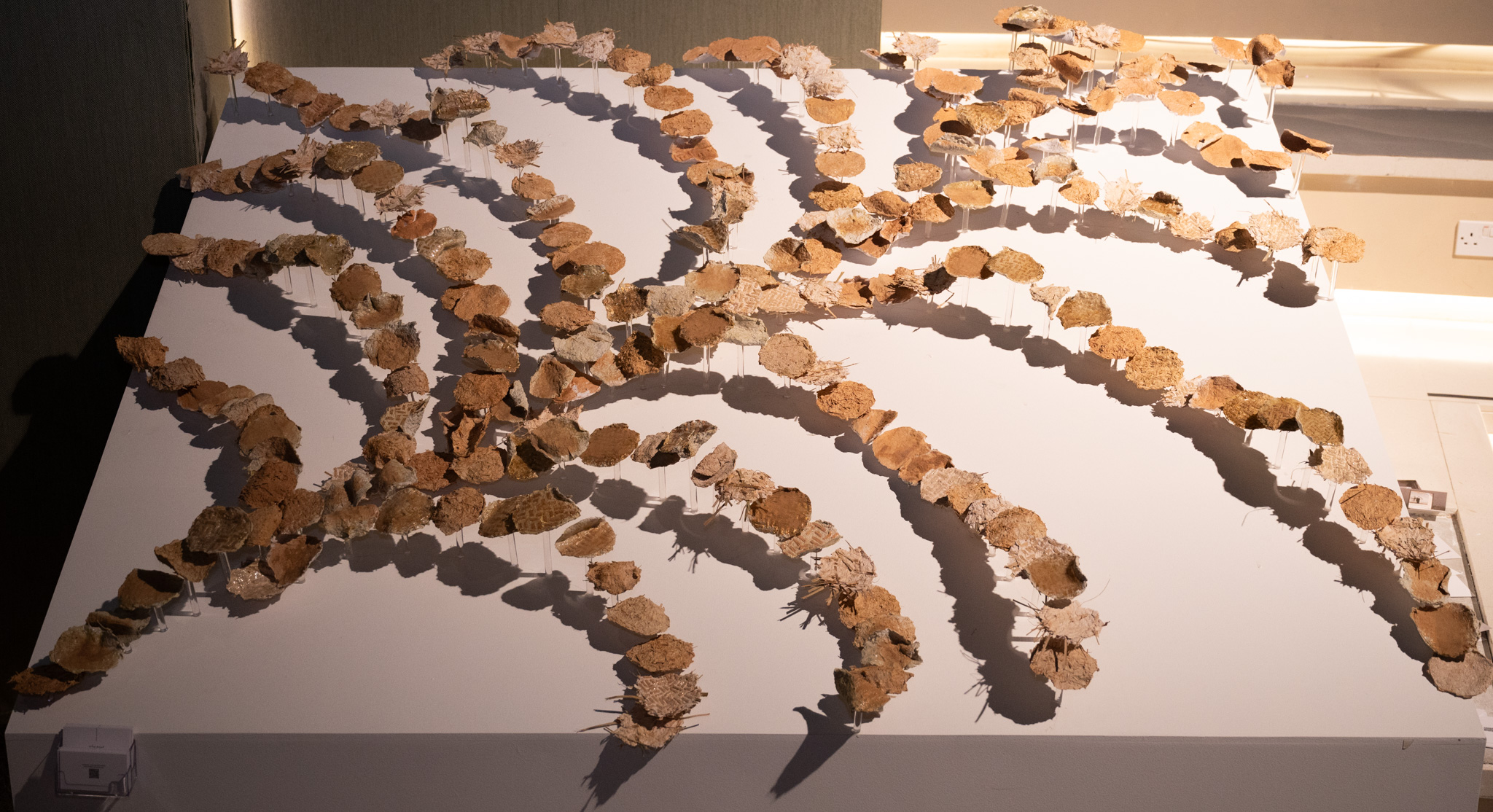
College of Arts and Creative Enterprises - Zayed University
Mariam Bayat
Athar Al Nakhla,2024
9x9cm each
Handmade papers with palm leave, resin, acrylic.
Courtesy of the artist and College of Arts and Creative Enterprises - Zayed University , Abu Dhabi
Athar Al Nakhla explores the influence of the nature on the artist, focusing on the interplay between nature and artistic expression.
Through a mixed media installation, it features abstract representations of the traditional craft of Al Khoos on handmade paper, merging the forms of dunes and palm trees. This artistic endeavor reflects the artist's curiosity about transforming the UAE's landscape into a visual narrative. It emphasizes the inseparable relationship between palm trees and sand, illustrating that one cannot exist without the other.
What if the essence of desert nature were art?
For more information, visit ZU website at: ZU.ac.ae